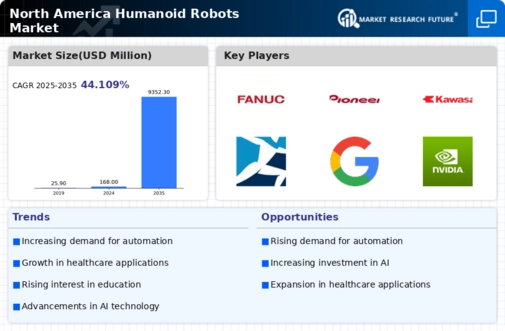The North America Humanoid Robots Market is witnessing significant advancements and competitive dynamics fueled by technological innovation and increasing demand across various industries. In this segment, companies are racing to enhance their offerings, focusing on artificial intelligence integration, user-friendly designs, and applications that range from customer service to healthcare support. Rapid developments in machine learning and robotics are facilitating the emergence of humanoid robots that can perform complex tasks, which further accelerates competition among key players.
The diverse needs of sectors, such as entertainment, education, and healthcare, create a rich environment for growth, prompting firms to invest heavily in research and development.
As the market evolves, keeping a pulse on competitive insights will be vital for stakeholders looking to navigate challenges and seize opportunities in this burgeoning field. iRobot holds a strong position in the North America Humanoid Robots Market, driven by its experience and innovation in the robotics sector.
With a focus on consumer-oriented products, the company's strengths lie in its ability to leverage advanced technology to create intuitive and efficient humanoid robots designed for household tasks. iRobot's brand recognition and established customer base in North America bolster its competitiveness as it continues to set standards in the industry through initiatives aimed at enhancing user interaction and automation.
The company's commitment to continual improvement, customer feedback, and integration of cutting-edge technology ensures that it remains a leader in catering to the specific needs of consumers in this region, providing reliable solutions that simplify everyday life.Sparrow Robotics is making its mark in the North America Humanoid Robots Market by focusing on innovative solutions tailored for educational and service applications. The company specializes in developing humanoid robots that can engage with users in real time, providing an interactive platform for learning and assistance.
Sparrow Robotics' strengths include its dedicated research efforts in artificial intelligence and robotics, resulting in products that are designed with user experience in mind. With product lines aimed at both educational institutions and commercial sectors, Sparrow Robotics is expanding its market presence through strategic partnerships and collaborations. Its ongoing efforts in mergers and acquisitions are positioning the company for greater technological advancements and broader market reach, allowing it to carve a niche in a competitive landscape while further enhancing its offerings in North America.




















